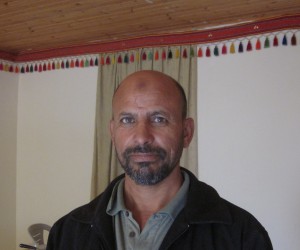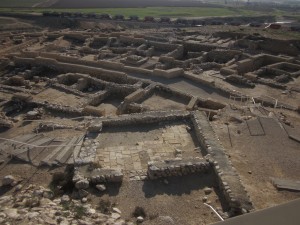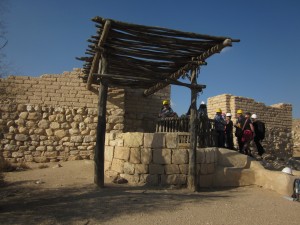We visited the bedouin settlement of Khašim Zannih near Beer-Sheva on November 19. The settlement of about 2000 people predates the establishment of the State of Israel. Atia al-Atameen, our bedouin host, said that Israel does not recognize his village, the home of his family for many generations. Khašim Zannih is not on the electrical grid or water system, and there are no medical clinics or schools in the village. Israel wants the bedouin like Atia to leave their ancestral lands and reside in developments supervised by the state.
After our lunch with Atia we drove to Tel Beer-Sheva national park. Beer-Sheva (or Beer-Sheba) is mentioned many times in the Bible. Jacob set out from there on his way to Haran (Gn. 28). The sons of Samuel were Judges in Beer-Sheva (1 Sam. 8:2). Saul built a fort in the city (1 Sam. 14:48). Jacob left Beer-Sheva for the wilderness when Jezebel pursued him (1 Kg. 19:3). The prophet Amos condemned the city for its idolatry (Amos 5:5 and 8:14).
The most famous story, however, is about Abraham, who settled in Beer-Sheva after Isaac was born. The patriarch sent gifts to Abimelech, a nearby king, to ensure his claim to the well (Gen. 21:27-32). So Beer-Sheva is strongly connected to the story of Abraham and his son. It is Isaac whom God commanded Abraham to kill, reflecting the practice of child sacrifice in the second millennium BC. We were glad to connect the events of biblical history with actual places, even if the events were somewhat harrowing.



